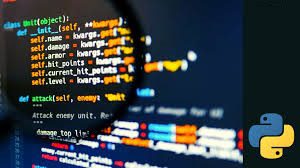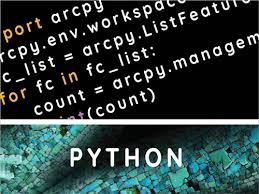Building a Strong Foundation: How to Choose the Best Image Dataset for Python-based Projects
Introduction to image dataset for Python-based projects
Image datasets play a crucial role in the success of Python-based projects that involve image recognition, computer vision, and machine learning. These datasets serve as the building blocks for training models and algorithms to accurately identify and interpret visual information. However, the process of selecting the right image dataset can be daunting, given the vast array of options available. This article will guide you through the process of choosing the best image dataset for your Python-based projects, ensuring a strong foundation for your endeavors.
Importance of choosing the right image dataset
Selecting the appropriate image dataset is essential for the success of any Python-based project that involves image processing. The accuracy and effectiveness of your algorithms and models heavily rely on the quality and diversity of the dataset used for training. A well-curated image dataset ensures that your models are trained on a wide range of visual examples, enabling them to generalize and make accurate predictions on new, unseen images.
Types of image datasets
Image datasets come in various forms, each catering to specific requirements and objectives. Some commonly encountered types include:
General Image Datasets: These datasets encompass a broad range of images from various domains and can be used for general-purpose image recognition tasks. They often include popular benchmark datasets such as ImageNet, COCO, and Open Images, which provide a large number of annotated images across multiple categories.
Specialized Image Datasets: These datasets are tailored for specific domains or tasks, such as medical imaging, satellite imagery, or facial recognition. They contain images that are specifically curated to address the unique challenges and characteristics of the target domain, resulting in improved performance and accuracy.
Custom Image Datasets: In certain cases, it may be necessary to create a custom image dataset that aligns closely with the specific requirements of your project. This involves manually collecting and annotating images relevant to your task, ensuring that the dataset is tailored to your specific needs.

Factors to consider when selecting an image dataset
Choosing the right image dataset requires careful consideration of several factors to ensure its suitability for your project. Here are some key factors to keep in mind:
Data Diversity: A diverse dataset should include a wide variety of images, capturing different angles, lighting conditions, backgrounds, and object variations. This ensures that your models can generalize well and perform accurately on new, unseen images.
Annotation Quality: If your project requires annotated images, it is crucial to assess the quality of the annotations. Accurate and consistent annotations are vital for training robust models, and datasets with high-quality annotations should be prioritized.
Dataset Size: The size of the dataset is an important consideration. While larger datasets generally yield better performance, it is essential to strike a balance between dataset size and computational resources. Consider the computational limitations of your project when selecting a dataset.
Task Relevance: Ensure that the dataset aligns with the specific task and objectives of your project. For example, if you are working on facial recognition, a dataset specifically curated for this task will be more relevant and beneficial than a general-purpose image dataset.
Popular image datasets for Python-based projects
Several image datasets have gained popularity within the Python community due to their quality, diversity, and extensive annotations. Here are some widely-used image datasets for Python-based projects:
ImageNet: ImageNet is one of the most well-known image datasets, containing millions of labeled images across thousands of categories. It serves as a benchmark for various computer vision tasks and provides a solid foundation for training deep learning models.
COCO: The Common Objects in Context (COCO) dataset is widely used for object detection and segmentation tasks. It consists of over 200,000 images with detailed annotations, making it a valuable resource for developing and evaluating algorithms.
Open Images: Open Images is a vast dataset that contains millions of images across various categories. It offers a diverse set of images with annotations, making it suitable for a wide range of computer vision projects.
How to evaluate the quality and suitability of an image dataset
Evaluating the quality and suitability of an image dataset is crucial before incorporating it into your Python-based project. Here are some key steps to consider when evaluating an image dataset:
Visual Inspection: Start by visually inspecting a subset of the dataset. Look for image quality, diversity, and relevance to your task. Ensure that the images are of sufficient resolution and clarity.
Annotation Accuracy: If the dataset includes annotations, evaluate their accuracy and consistency. Randomly sample annotated images and compare them with the provided annotations to check for any discrepancies or errors.
Dataset Statistics: Analyze the dataset statistics, such as the number of images per category, the distribution of object sizes, and the presence of class imbalances. These statistics will help you understand the dataset’s characteristics and potential challenges.
Benchmark Performance: Look for existing benchmark performance results achieved using the dataset. This will give you an idea of the dataset’s suitability for specific tasks and help you set performance expectations for your models.
Preprocessing techniques for image dataset Python
Preprocessing plays a crucial role in preparing image datasets for training models. Here are some common preprocessing techniques used in Python-based projects:
Image Resizing: Resizing images to a consistent resolution ensures that the models can handle images of different sizes. This is particularly important when working with datasets that contain images of varying resolutions.
Normalization: Normalizing the pixel values of images helps in reducing the impact of lighting variations and improves model convergence. Common normalization techniques include scaling pixel values between 0 and 1 or standardizing them to have zero mean and unit variance.
Data Augmentation: Data augmentation techniques, such as rotation, flipping, and cropping, can be applied to increase the diversity and size of the dataset. This helps in improving model generalization and robustness.
Tools and libraries for working with image datasets in Python
Python provides a rich ecosystem of tools and libraries for working with image datasets efficiently. Here are some notable tools and libraries that can streamline your workflow:
NumPy: NumPy is a fundamental library for scientific computing in Python. It provides efficient handling of multi-dimensional arrays and allows for various mathematical operations on images.
Pandas: Pandas is a powerful data manipulation library that provides easy-to-use data structures and data analysis tools. It can be useful for organizing and managing metadata associated with images in a dataset.
OpenCV: OpenCV is a widely-used computer vision library that offers a broad range of functions for image loading, manipulation, and processing. It provides essential tools for tasks such as image resizing, cropping, and filtering.
Scikit-image: Scikit-image is a Python library specifically designed for image processing tasks. It includes a comprehensive set of algorithms and functions for various image processing operations, such as edge detection, segmentation, and feature extraction.

Best practices for managing and organizing image datasets
Effectively managing and organizing your image datasets is crucial for maintaining a streamlined workflow and ensuring reproducibility. Here are some best practices to consider:
Version Control: Use a version control system, such as Git, to track changes made to your dataset over time. This allows you to easily revert to previous versions and collaborate with others effectively.
Metadata Management: Maintain a well-structured metadata file that contains relevant information about each image in your dataset. This can include attributes like image ID, label, source, and any additional annotations.
Data Splitting: Split your dataset into training, validation, and testing subsets. This ensures that your models are trained on a representative sample of images and allows for unbiased evaluation of their performance.
Backup and Storage: Regularly backup your image dataset and ensure that it is stored securely. Consider using cloud storage or external hard drives to prevent data loss and facilitate easy access.

